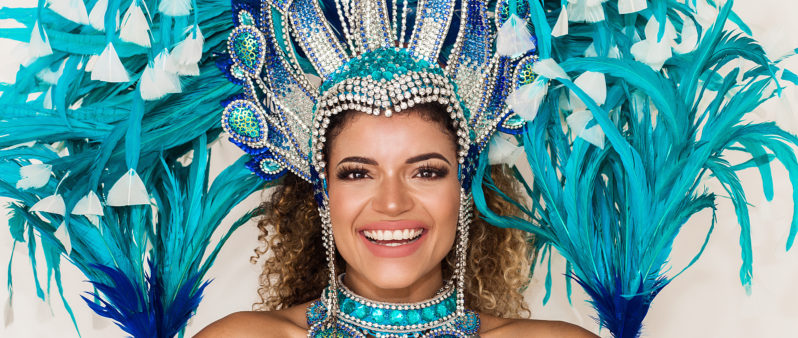
It is Carnival Time!
It is Carnival Time!
Carnival is one of the most popular and most celebrated festivals around the world. Have you ever been to a Carnival to Rio in Brazil or to Venice in Italy? In this newsletter, we will explore the notion of carnival, its beginnings and visit the biggest parties in the world!
Where is the tradition of Carnival coming from?
Nowadays, carnivals are associated with Lent and Christianity. However, according to historians, this tradition can date back to ancient Sumer and Egypt about 5,000 years ago.
We do not know exactly the provenance of this word. There are many theories connected to it. One theory is that the name derives from Latin words ‘carrus navalis’ and means wagon in the shape of a ship. They used this type of wagon in the Roman bacchanalias, which were celebrations organized for God Bachus, God of Crops and Wine. People were having fun drinking wine and dancing for many hours and very often using disguise as well. Another theory says that the name carnival was from Latin ‘carnavale’, which means goodbye to meat (caro–meat and vale–goodbye). It was the time of great fasting before the Good Friday.
The Most Colourful Carnivals in the World
Rio de Janeiro is the biggest carnival in the world. It starts on February 21 and finishes on February 29. There are many events happening. We can experience samba dances and informal street parades. The Brazilians organize samba drome parades, adding beads and beautiful feather masks to their elaborate costumes.
Venice in Italy is well-known for its private events and balls taking place between February 8th and 25th. Arriving in an over-the-top costume or masks is a must. The costumes remind of Venetian noblemen and women, which makes the entire event a historical re-enactment. Iconic face masks are parts of these events. They originate from ancient Greek and Roman festivals, including Banta, which is a white mask with square jaw line and no mouth. Its purpose was to disguise people from lower classes, so everyone could take part in parties and events. We can buy the masks from local street vendors.
People from Trinidad and Tobago are preparing for the carnival the entire year. When finally it comes on February 24th and 25th, it is a feast waking up all senses: costumes, drums, street food, and dancing. It takes place under the sun and lasts the whole day. If you want to have fun and do something different, like playing in the band, they will advise you on the type of costume, as each band has a different attire. You can register online for it.
Now, pack your suitcase, and let’s go to dance samba!
Vocabulary
Carnival – the season immediately preceding Lent (karnawał)
Lent – Christianity the period of forty weekdays lasting from Ash Wednesday to Holy Saturday, observed as a time of penance and fasting commemorating Jesus’ fasting in the wilderness. (modifier) falling within or associated with the season before Easter Lent observance (Wielki Post)
wagon – any of various kinds of four-wheeled vehicles designed to be pulled or having its own motor and ranging from a child’s toy to a commercial vehicle for the transport of heavy loads, delivery, etc. Informal (wóz)
crops – harvest, produce (płody rolne)
re-enactment – the acting out or repetition of a past event or situation (rekontrukcja zdarzeń)
disguise – to change the appearance or guise of so as to conceal identity or mislead (przebrać się w kostium)
beads – a small, usually round object of glass, wood, stone, or the like with a hole through it, often strung with others of its kind in necklaces, rosaries, etc. (koraliki)
elaborate – worked out with great care and nicety of detail; executed with great minuteness (wyszukany)
jaw – either of two bones, the mandible or maxilla, forming the framework of the mouth (szczęka)
attire – clothes or apparel, especially rich or splendid garments (strój)